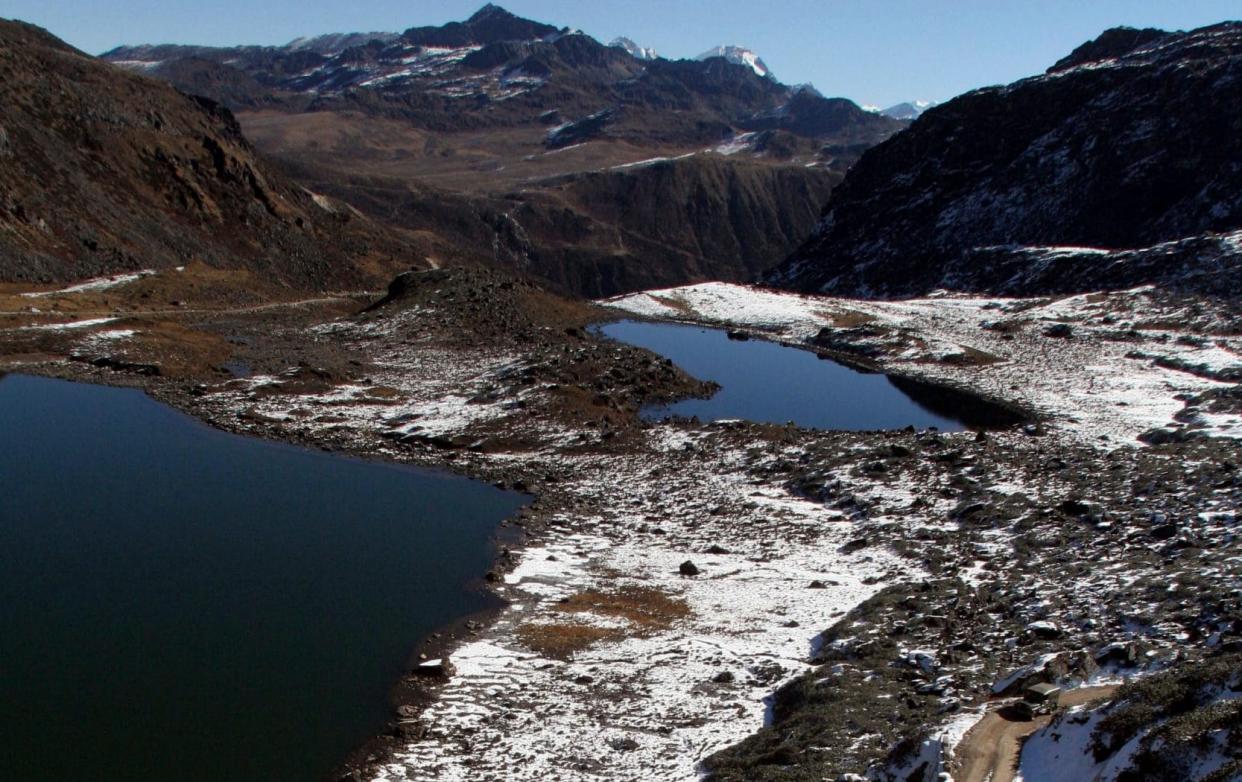Six Indian soldiers severely injured in border skirmish with Chinese troops

At least 20 Indian soldiers have been injured, six of them severely, in hand-to-hand combat with Chinese troops in a remote border region.
Tapir Gao, a Bharatiya Janata Party (BJP) MP in Arunachal Pradesh, the northeastern state where the clashes took place, told The Telegraph that a group of Indian soldiers had been attacked by nearly 600 Chinese troops on December 9.
"The Chinese soldiers came inside Indian territory and attacked our soldiers," he said.
The incident is the first serious flashpoint between India and China since at least 20 Indian soldiers were killed in clashes that broke out in Ladakh in 2020.
Mr Gao said six Indian soldiers were injured severely in the fighting on Friday, and have now been transferred to hospital in the nearby city of Guwahati. The men suffered broken limbs, according to Indian daily The Hindu. The Indian media has reported that there were more injuries amongst the Chinese troops.
Indian army sources declined to comment on the matter to The Telegraph or discuss the spark for the latest clash between the two nuclear-armed Asian superpowers.
The incident took place in the Yangtse-one area, which lies on the India-China border, known as the Line of Actual Control.
The two countries fought a war in 1962 which ended in a humiliating defeat for India. China still claims Arunachal Pradesh, a sparsely populated but strategically important Himalayan state that lies to the east of Bhutan, as part of South Tibet.
An uneasy truce has been enforced since the end of the war, but the border, which extends for over 2,100 miles, is poorly demarcated and troops and civilians from either side can easily cross into opposition territory by accident.
In June 2020, at least 20 Indian soldiers died in vicious hand-to-hand clashes with Chinese troops inside the Indian union territory of Ladakh.
Chinese troops allegedly bludgeoned Indian soldiers to death with home made clubs and rocks, seizing at least 20 square miles of strategically important border territory.
That was the first deadly clash on the India-China border in 45 years - troops do not usually carry guns to try and reduce the risk of a conflict escalation.
De-escalation discussions
Officials from Beijing and Delhi met regularly over the last two years to discuss de-escalation but were unable to reach an agreement and instead, the two countries continued to strengthen their military presence along the Line of Actual Control.
“I have been saying for a long time that China’s challenge will come in Arunachal Pradesh and this latest incident is directly linked to Tibet and China’s planned sovereignty [over the wider Tibet region],” said Sushant Singh, a senior fellow at India’s Center for Policy Research, a Delhi-based think tank.
“Such incidents will continue to arise because of the difference of military, economic and technological power between the two countries. There is no easy solution to the border crisis and I don’t foresee any solution in the near future,” he said.
In November 2021, China was accused of building two villages in Indian territory in Arunachal Pradesh. The existence of these villages was confirmed by the Pentagon.
While India is an emerging global force, the government is becoming increasingly aware that it cannot compete with China economically or militarily.
India’s neutral position over Russia’s invasion of Ukraine is seen by some observers as recognition of this - Delhi has refused to vote against Russia in all but one of the United Nations’s resolutions against Moscow and has become a major importer of Russian oil.
Analysts believe a nervous India hopes to use Russia as a peacemaker in any potential future conflict with China. Beijing has also cosied up to India’s long term rival, Pakistan, with which India has fought three wars since independence.
China dependents
On Friday, a study by DoubleThink Labs, a Taiwan-based research organisation, ranked Pakistan atop a ranking measuring the reliance on China of 82 countries around the world, citing Islamabad’s dependence on Beijing for its foreign and domestic policy and its dependence on China for economic support.
India also joined the Quad, a strategic Indo-Pacific military alliance which also includes the United States, Australia and China, as well as increasing its domestic military spending by ten per cent in 2022.

 Yahoo News
Yahoo News 
